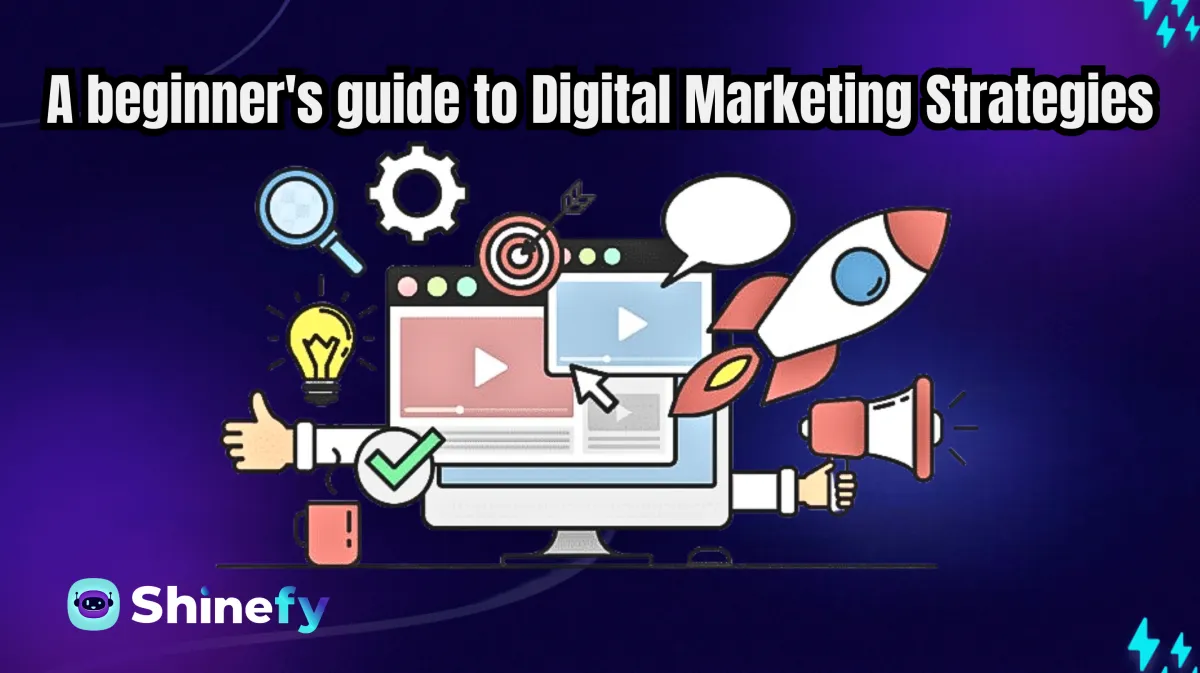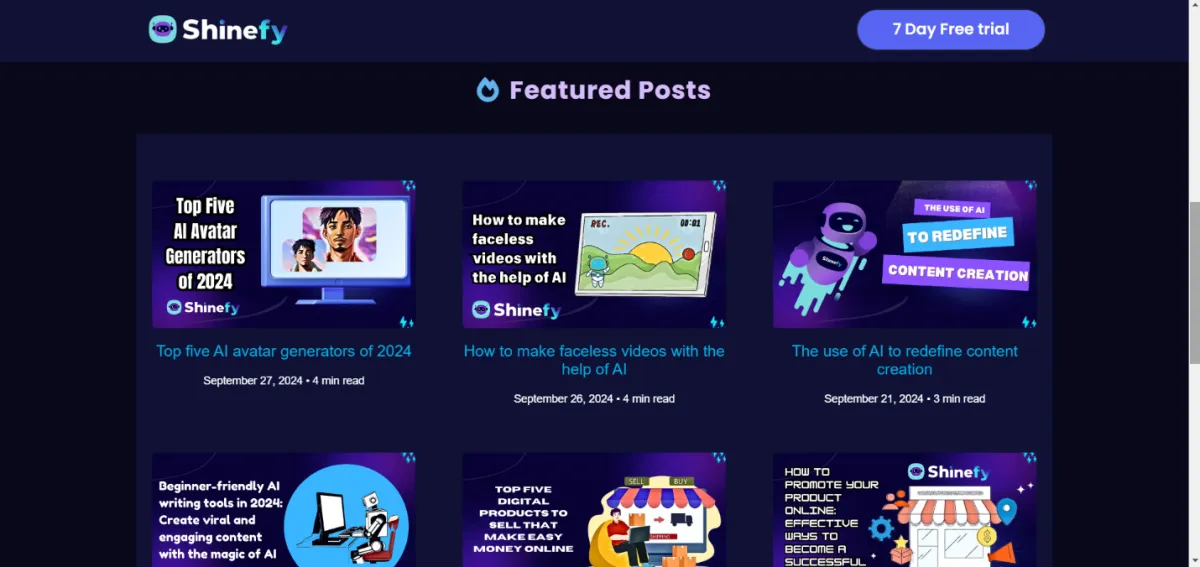
September 28, 2024 by Shinefy

Social Media Branding: Helpful tips in building your brand
Before the introduction of the Internet, businesses could promote themselves through billboards, television spots, newspaper articles, flyers, direct mail, or store window displays. But with the advancement of technology, marketing and advertising have moved online. Marketers can now reach their target audience via digital channels such as social media, search engines, websites, text messages, and email, and these comprise what we think of as digital marketing or online marketing.
A digital marketing strategy is a plan for using channels to grow your visibility online. It should look at factors such as your target audience, strengths and weaknesses, and competitors.
To create an effective strategy you should use data across the business to inform and speculate. This will help you establish which marketing channels to use or test, your target audience, and how to communicate your message or brand.
Do take note, marketing strategy is different from marketing tactics:
A marketing strategy is a detailed, organized plan that outlines how you’ll reach your goals through Internet marketing.
A marketing tactic is a specific action you’ll take to implement your strategy. Common examples of marketing tactics include sending emails to customers and leads, creating blog posts and articles, and launching advertisements.
Now you know the difference between the two, here are a couple of good marketing strategies to promote your business.
1. Content Marketing
Content marketing is a strategy for digital marketing where your business focuses on reaching, engaging, and connecting with consumers via informational content. It answers people’s questions and assist them through content rather than interrupt them with unsolicited promotions. It includes content such as blog posts, landing pages, videos, podcasts, infographics, white papers, eBooks, case studies, and more.
The overall goal of content marketing is to provide valuable information to your target audience, increase traffic, and generate conversions. From a technical standpoint, content marketing also focuses on optimizing your content for search engines to improve your visibility in search results.
Savvy marketers create content that’s ideal for multiple user personas in all stages of the sales funnel. For example, a user who is unaware of your brand and found your website through organic search needs different content than a prospect who is almost ready to buy. You’ll need to understand your buyers' journeys and come up with unique content that addresses their needs every step of the way.
Why use content marketing?
Strong relationships with customers
Better SEO
Increased brand authority
With the ability to connect with audiences throughout the buying funnel, content marketing is a smart digital marketing strategy to use. The best part is that unlike with paid advertising, you don’t have to pay for the traffic your content brings in — you simply earn it through the quality of your content.

2. Search Engine Optimization (SEO)
Search Engine Optimization (SEO) is the process of optimizing your website and your content in order to achieve higher rankings in search engines and increase the amount of organic traffic to your site. It involves a variety of tactics, like creating high-quality content, optimizing content around keywords and user needs, incorporating meta information, and nsuring your website is optimized for search engines.
Ultimately, SEO strives to bring in the right visitors organically to drive more leads and sales.
SEO includes strategies like:
Local SEO that focuses on building your presence in local searches, through tactics like targeting location-based keywords and claiming your Google Business Profile.
Technical SEO assists you to optimize the backend of your website, so you can perform well in search results.
Ecommerce SEO helps you focus on optimizing your website to appear and rank queries focused on buying products.
Enterprise SEO that focuses on helping these companies optimize for highly competitive search queries.
Why use SEO?
Higher conversion rates
Increased brand awareness
Long-term cost savings
When it comes to digital marketing strategies, look at SEO as a requirement. It intercepts every member of your target audience, no matter where they are in your buying funnel. The reason for this is that almost every user begins their search for a new product or service with a search engine.
SEO aims to direct more traffic to your website — specifically, traffic made up of people from your target audience. These are consumers who are actively searching for the products and services you offer.

3. Email Marketing
Email marketing is the practice of sending promotional and informational emails to build relationships with your audience, convert prospects into buyers, and turn one-time buyers into loyal fans of your brand.
These emails may discuss exclusive deals, promote website content, upcoming sales, or general messages on the behalf of your business.
The idea is that, while these users may not need your services or products now, they’ll remember your brand when it’s time to make a purchase. That brand awareness encourages them to choose your company when they’re ready to buy.
The main objective of email marketing as a digital marketing initiative is to stay top-of-mind for potential customers, and provide current clients with beneficial information and personalized content that keep them coming back.
Why use email marketing?
Traffic to your website
Cost effective
Delivers targeted messages
Email marketing offers tons of benefits. That’s why more than 80 percent of companies use email marketing, from manufacturing operations to retail stores to technology businesses.
4. Social Media Marketing
Social media marketing focuses on building brand awareness and increasing conversions by using social media platforms. It uses social media platforms like Facebook, Twitter, LinkedIn, and Instagram to:
Promote your content, products or services
Build brand awareness and visibility
Gain fans or followers
Engage current and prospective customers
Drive traffic to your website
Keep in mind that each platform has its own strengths and weaknesses. So you need to choose the ones that will work best for your business.
Why use social media marketing?
Cost-effective marketing
Audience interaction
Improved brand loyalty
With less than 30% of companies using social media as a marketing strategy, there is an immense opportunity for businesses that invest in it. Even better, almost 3.5 billion people use social media, meaning it’s a perfect outlet for reaching your target audience.

To maintain consistent visual branding across platforms, compile a library of assets for use on social media channels. This could include Instagram templates, infographics, videos, product photos, team photos, and downloadable resources such as one-pagers describing products or services.

5. Track results and refine strategy
Once your social media campaigns are live, schedule weekly or monthly times to run analytics reports and compare results against baseline metrics and goals. Analyze engagement data to identify top-performing content and adjust your strategy accordingly.
